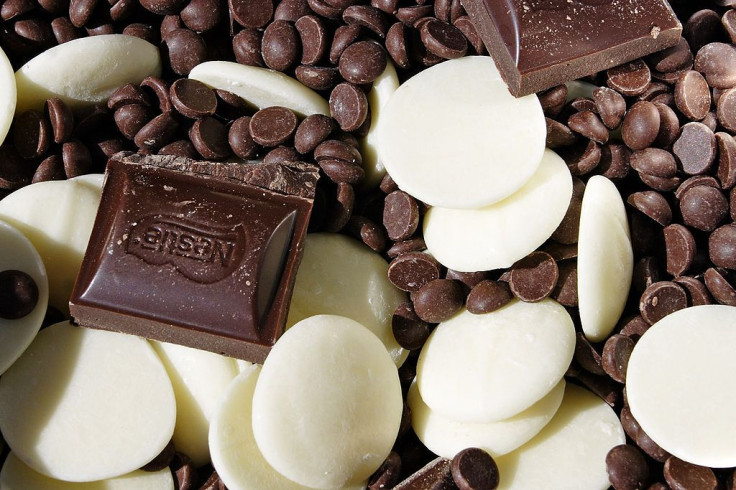Chocolate Makes Us Feel Good, But Can It Also Make Us Feel Healthy?

Chocolate as a sacred cow of indulgence now faces a trimmer, more agile competitor: in the arena of healthfulness, the sacred cow is no match for the Skinny Cow.
The Nestle-produced low-fat frozen snack Skinny Cow, which also developed a line of candy in 2011, is only one of many emerging chocolate products that asks whether chocolate needs to be unhealthy just to taste good.
Recent data shows the overall chocolate confectionary market has slipped below the reduced-fat market in its rate of growth, measured by total tonnage. Combined with emerging research on cocoa's health benefits, this new information has manufacturers headed in a diet-conscious direction.
The migration toward healthier alternatives is evident in the cocoa market's first quarter numbers, which Reuters reports "rose nearly 6 percent in North America, the biggest annual jump in nearly two years." Meanwhile, in Europe and Asia, researchers saw decreases in grindings — the term used for processing cocoa beans, which often represents consumer demand.
And demanding the United States is, indeed. Although many European countries consuming more chocolate per capita, the United States currently sits atop the list of chocolate-consuming nations.
In the face of an obesity epidemic, many Americans are curbing their chocoholism, or at least finding less intoxicating alternatives — such as segmented bars that are gluten- and sugar-free, or bars that contain healthful additives like probiotics.
"There's really a concern about obesity in the U.S. and this is having an impact on demand for chocolate confectionery," said Francisco Redruello, Euromonitor International senior industry analyst for foods in London. "So 2012 has seen new concepts, new lines, trying to launch healthier chocolate with low fat."
Redruello and Euromonitor International have been optimistic as of late about the recent trends in U.S. chocolate consumption. In the past five years, volume has decreased by 15 percent following many companies' decision to reduce the physical size of their products.
Nestle — the makers of Skinny Cow — have released a line of candies called Divine Filled Chocolates: a trio of mini chocolates that totals 130 calories per serving. Not to be outdone, the Hershey Company released Simple Delights in July of last year — tiny, foil-wrapped candies that have 30 percent less fat than the average milk chocolates. Dark chocolate as well has been known to improve heart health and reduce risk of stroke, an alternative researchers say is on the rise.
Admittedly, "reduced-fat" and "healthy are not necessarily synonymous, a fact that chocolate manufacturers readily disclose.
"We do not view these products as being healthy but fantastic alternatives to what you might eat when we all know we love chocolate," said Tricia Bowles, communications manager for Nestle Confections & Snacks, Nestle USA.
Meanwhile, other research suggests that healthy chocolate may indeed become a possibility.
Stefon Bon, head researcher at the University of Warwick in the UK, has shown that agar can mimic the velvety properties in chocolate that fat is often called upon to produce.
A gelling agent, agar replicates fat globules' properties of maintaining the chocolate's texture and absorbing any liquids that might be present.
"It would both lower fat content and sugar content," Bon said, "so for people that just have a craving and just want to down a bar of 200 g, you take half the amount of fat in, so it's great."
Researchers at the university have also experimented with infusing vodka into chocolate, further highlighting the importance of eating responsibly.



























